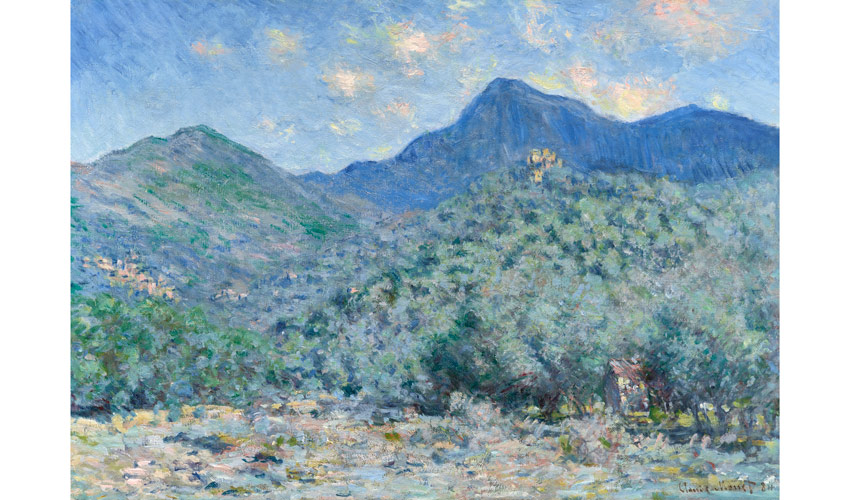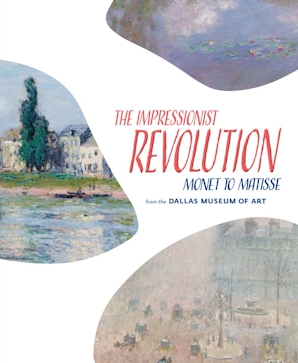October 5, 2025-January25, 2026
Frist Art Museum
(
The Impressionist Revolution: Monet to Matisse from the Dallas Museum of Art explores the fascinating story of impressionism from its birth in 1874 to its legacy in the early 20th century. Through nearly 50 paintings and sculptures, this exhibition reveals the rebellious origins of the independent artist collective known as the impressionists and the revolutionary course they charted for modern art. Breaking with tradition in both how and what they painted, the impressionists redefined what constituted cutting-edge contemporary art. The unique innovations of its core members, such as Edgar Degas, Claude Monet, and Berthe Morisot, set the foundation for generations of avant-garde artists that followed, from Paul Gauguin and Vincent van Gogh to Piet Mondrian and Henri Matisse.
Valle Buona, Near Bordighera (detail), 1884. Claude Monet. Oil on canvas. Dallas Museum of Art, gift of the Meadows Foundation, Incorporated, 1981.127
Celebrating the 150th anniversary of the first impressionist exhibition, The Impressionist Revolution invites visitors to reconsider these now-beloved artists—once thought to be scandalous renegades—as well as the impact they had on 20th-century art.
The exhibition draws extensively from the DMA’s extraordinary holdings, including masterworks by Mary Cassatt, Claude Monet, Pierre-Auguste Renoir, Edgar Degas, Berthe Morisot, Vincent van Gogh, Paul Gauguin, Henri de Toulouse-Lautrec, Henri Matisse, Piet Mondrian and more.
In 19th-century France, the Salon exhibition organized and juried by the state-run Academy of Fine Arts was the only non-commercial venue where living artists could publicly exhibit their work. Artists working outside the Academic tradition, which favored subjects drawn from history or literature and polished brushwork, were frequently rejected and left with no other avenues to garner critical and professional success. Pushing against this official system was the Anonymous Society of Painters, Sculptors, Printmakers, etc., a collective of artists we now call the Impressionists. They banded together in 1874 to mount the first of what would become eight independent exhibitions over the course of 12 years, an act that was as rebellious as it was entrepreneurial.
“While the Impressionists are well known and widely popular today, many people will be surprised to learn that there was little appreciation or market for their work until well after their last group show in 1886,” said exhibition curator Dr. Nicole Myers, the DMA’s Chief Curatorial and Research Officer. “Breaking with tradition in both how and what they painted, as well as how they showed their work, the Impressionists redefined what constituted cutting-edge contemporary art at great personal and financial risk. The Impressionist Revolution invites you to reconsider these now beloved artists as the scandalous renegades they were and the considerable impact they made on 20th-century art.”
The Impressionist Revolution from Monet to Matisse takes the revolutionary exhibition of 1874 as its starting point, tracing a 40-year journey through the movement and the legacy it left for the painters who followed. Drawn primarily from the DMA’s extensive holdings, the works in the exhibition spotlight a range of these avant-garde artists and illustrate the experimental techniques and subjects that set a new course for modern art in the late 19th and early 20th centuries. The exhibition is organized into six thematic sections including: “Rebels with a Cause,” which details the beginnings and key players of the Impressionist movement; “Making It Modern,” which examines Impressionist depictions of life in a rapidly modernizing world; “Field Notes,” which explores the Impressionists’ radical approach to painting techniques and materials; “Weird Science,” which showcases the invention of Chromo-Luminarism, known today as Pointillism, which pushed Impressionism to its scientific ends; “Side Effects,” which explores the backlash against Impressionism’s main tenets by a younger generation of artists who prioritized emotions, ideas and personal expression over purely optical impressions; and “Ever After,” which traces the far-reaching influence of Impressionism into the 20th century, offering a glimpse into some of the bold and innovative movements it inspired.
Cafalogue
The revolutionary roots of the artists collective known as the Impressionists—and the course they charted for modern art
The Impressionist Revolution: Monet to Matisse from the Dallas Museum of Art chronicles the evolution of a movement, from its inception in 1874 to its early twentieth-century legacy. The Impressionists—whose pioneering members included Claude Monet, Edgar Degas, and Berthe Morisot—deviated from artistic norms in subject matter, style, and exhibition practices, reshaping the definition of artistic innovation at the time and beyond.
Drawing exclusively from the Dallas Museum of Art’s collection, this book illuminates the genesis of the Impressionist collective, its key figures, and what made their work so revolutionary. The narrative extends beyond the group’s final exhibition in 1886, exploring how Post-Impressionists both embraced and challenged Impressionist aesthetics, influencing a fresh wave of artists—including Henri Matisse, Piet Mondrian, and Alexei Jawlensky—who ushered in a new avant-garde for the early twentieth century.

